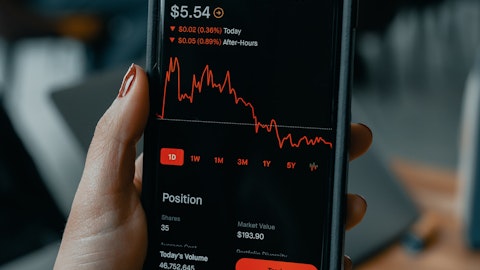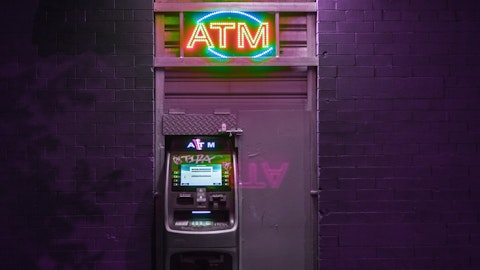Steven Alexopoulos: Okay. And then, if I could just squeeze one more, Mike, going back to the new NIM outlook. I know Jim said in his commentary that you guys expect rates of decline more in line with the market in the second half of 2023. If rates were to move to say, by 5%, 5.5% rates and stay there and not come down in the second half, how would that change your NIM outlook for 2023? Thanks.
Mike Roffler: Once it stabilizes, you sort of stabilized from there, but I don’t think it changes that a whole lot. I think the pace of change is what has happened this year that led to the increase, or the increase in funding costs. And the real impact if you think about it is, in the future, if you leap forward to 24. And you’re stable, is when you’ll start to see the inflection where net interest income starts to grow. Right now that that looks like the back half of the year on a linked quarter basis. If the Fed delays that might delay that a quarter. But then you start to see the inflection higher thereafter.
Steven Alexopoulos: Okay. Great. Thanks for taking my questions.
Operator: We will take the next question from Dave Rochester with Compass Point. Please go ahead.
Dave Rochester: Just starting on NIM guide real quick, are you assuming for the funding of earning asset growth, primarily CDs and borrowings at this point? Maybe you just talk about the mix there and the growth of deposits that you’re thinking about. And then you did have a decent amount of one off and non-interest bearing which a lot of banks are experiencing at this point. Was just curious, how should we expect this type of pace to continue? Or do you see a level at which you’d expect the trend to sort of subside and then get down to more of a sticky base that’s remaining? Where do you see that sort of trailing off? Thanks.
Mike Roffler: Yes. Maybe on the — what you’re getting on is, the average balance size, it has come down. So our average balances per account peaked, probably at the end of last year, they have come down closer to their pre-pandemic levels. And then obviously, as I mentioned earlier, there’s a level of operating needs that clients have to have to operate with. I think that the outlook, we’re going to largely fund loan growth with deposits, and then there’ll be a mix of borrowings that is also utilized just like we have in the past. And the growth rate will probably be greater in CDs than it will be in checking given where the rates are this year and that’s reflected in our outlook.
Dave Rochester: Okay, great. And then maybe just on capital, Tier-1 leverage looks good. Notice the CET1 ratio down a little bit below 9%. Is that an issue at all? And just how are you thinking about that level going forward? Thanks.
Mike Roffler: No issue with our capital currently. As always, we remained opportunistic and methodical relative to capital won’t be a preferred or common.
Dave Rochester: Great. And then maybe one last one on loan production rates. Maybe if you could just kind of go through the key products and talk about where your pricing was today. That’d be great. Thanks.
Mike Selfridge: Sure. Dave, it’s Mike Selfridge, I will give you a couple of indicators here and look more — rather look more at the locked pipeline as of today. So single family or locked pipeline. These are deals that are in the queue. And due to close soon, single family mortgages about 5.80, multifamily about 5.4%, commercial about 5.6%. And the whole locked real estate loans right now are little over 5%, maybe 5.10. The business banking side, nothing’s changed their capital call lines tend to be the larger part of the pipeline, and that still remains in the prime minus 75 to prime minus 100 basis point range.
Dave Rochester: Great. Thanks for the color, guys.
Operator: We’ll take the next question from with Bank of America. Please go ahead.




